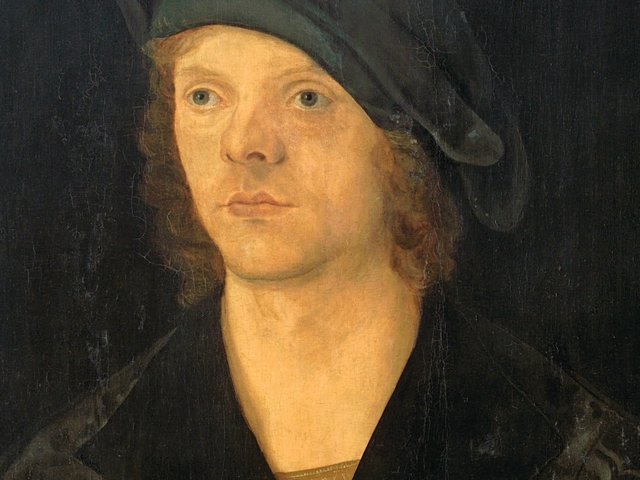How old is the “modern” art market? When did artists begin to produce works for sale to a wide variety of consumers rather than in response to commissions? When did shops appear with ready-made goods designed to attract the passing customer’s eye? Up to now, it has generally been assumed that the Low Countries and Italy led the way, especially in centres such as Bruges, Brussels, Antwerp, Florence and Venice. Germany, it is said, lagged behind.
The reasons have seemed obvious. The persistence of a strict guild structure supported by city and territorial governments seemed incompatible with the development of a free market. Furthermore, the predominance of princes, city magistrates, ecclesiastical foundations and religious corporations as patrons generated such steady income for the guild craftsmen that there was little need to look to new markets. These arguments rest on apparently reasonable suppositions that rely on historians’ traditional perceptions of the history of the late medieval Holy Roman Empire. Berit Wagner’s fascinating study of the early German art market, Bilder ohne Auftraggeber: der deutsche Kunsthandel im 15. und frühen 16. Jahrhundert (Pictures without patrons: the German art market in the 15th and early 16th centuries), suggests an alternative view.
Using a wide variety of sources, including guild records, market rolls and legal proceedings, as well as the visual evidence provided by paintings and prints, Wagner proves that Germany in fact developed at around the same pace as the Low Countries and Italy. A panel painting of around 1440 by Konrad Witz of Basel, for example, clearly shows the first depiction of an art dealership in Germany. Behind an image of Saints Catherine and Mary Magdalen, one’s gaze is taken down a Gothic nave or side-aisle through an open door to a house on the other side of the street. Here the open bottom shutter is folded down and on it stands two gold-painted wooden statues and a painted wooden panel. It seems obvious that we are looking at a sales stand in an artist’s house and in the street itself we see passers-by or potential customers.
The image has been commented on by numerous scholars. Wagner wants to go further. She interprets it as a comment on the efforts by the Council of Basel (1431-1449) to ban the sale of images from the churches and even to control the production of painting and wood carvings.
Witz was in effect justifying the sale of religious images to private individuals. In doing so he was simply documenting contemporary developments. Artists of all kinds were producing all manner of artefacts that were marketed to private individuals in makeshift shops or at places of pilgrimage and the like. Restrictions imposed by sales licensing systems were relatively easily evaded, it seems.
By the time Witz painted his panel, art had been traded at the Frankfurt trade fairs and at the Nördlingen Whitsun fair for at least 25 years. By the 1470s the Leipzig fair had established itself as the prime centre for the eastern trade in Central Europe; like Frankfurt, it had numerous small stands selling art, as well larger stands specialising in cloths.
It is not surprising to find that a major seller at Leipzig in the early 16th century was that dynamic entrepreneur and master of diverse media, Lukas Cranach the Elder. He certainly was not a man to stand by and watch the emergence of the figure who came to be the other key player in this story: the art dealer. Wagner’s pages on artist-entrepreneurs, including Veit Stoss and Dürer in addition to Cranach, and the struggles between artists and dealers are both illuminating and entertaining.
Wagner’s book genuinely adds a new dimension to our knowledge of the beginnings of the European art market.
• Joachim Whaley is a professor of German history and thought at the University of Cambridge and a Fellow of the British Academy. He is the author of Germany and the Holy Roman Empire 1493-1806 (two volumes, Oxford University Press, 2012)
Bilder ohne Auftraggeber: der deutsche Kunsthandel im 15. und frühen 16. Jahrhundert
Berit Wagner
Michael Imhof Verlag, 352pp, €69 (hb); in German only


